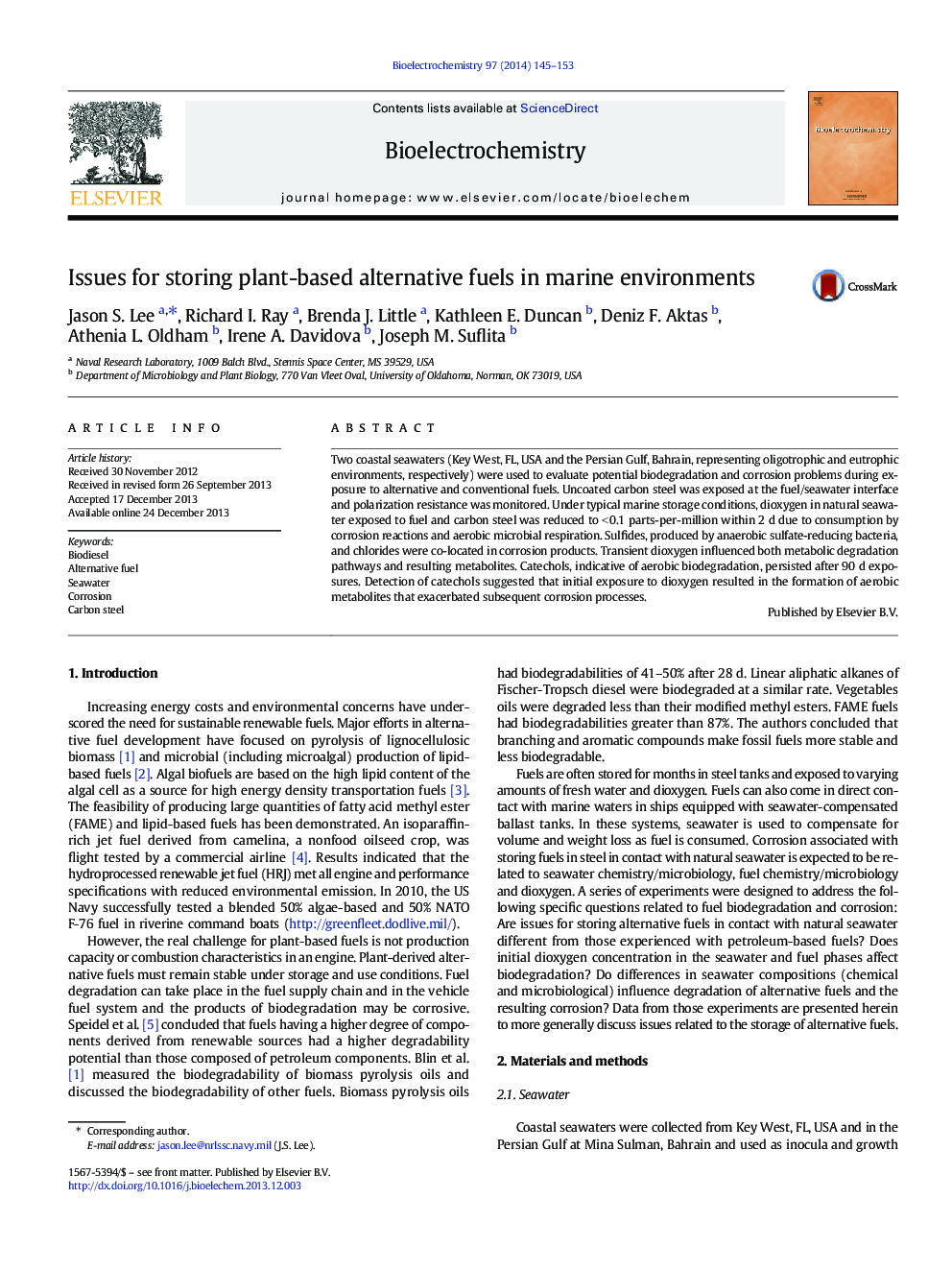| Article ID | Journal | Published Year | Pages | File Type |
|---|---|---|---|---|
| 1268001 | Bioelectrochemistry | 2014 | 9 Pages |
•Nature and extent of biofouling in seawater/fuel incubations varied among the fuels.•Corrosion of carbon steel was due to reactions with sulfide.•Corrosion rate trends appeared to be related to transient oxygen.•Fate of the water-soluble fuel components was influenced by the presence of oxygen.
Two coastal seawaters (Key West, FL, USA and the Persian Gulf, Bahrain, representing oligotrophic and eutrophic environments, respectively) were used to evaluate potential biodegradation and corrosion problems during exposure to alternative and conventional fuels. Uncoated carbon steel was exposed at the fuel/seawater interface and polarization resistance was monitored. Under typical marine storage conditions, dioxygen in natural seawater exposed to fuel and carbon steel was reduced to < 0.1 parts-per-million within 2 d due to consumption by corrosion reactions and aerobic microbial respiration. Sulfides, produced by anaerobic sulfate-reducing bacteria, and chlorides were co-located in corrosion products. Transient dioxygen influenced both metabolic degradation pathways and resulting metabolites. Catechols, indicative of aerobic biodegradation, persisted after 90 d exposures. Detection of catechols suggested that initial exposure to dioxygen resulted in the formation of aerobic metabolites that exacerbated subsequent corrosion processes.
